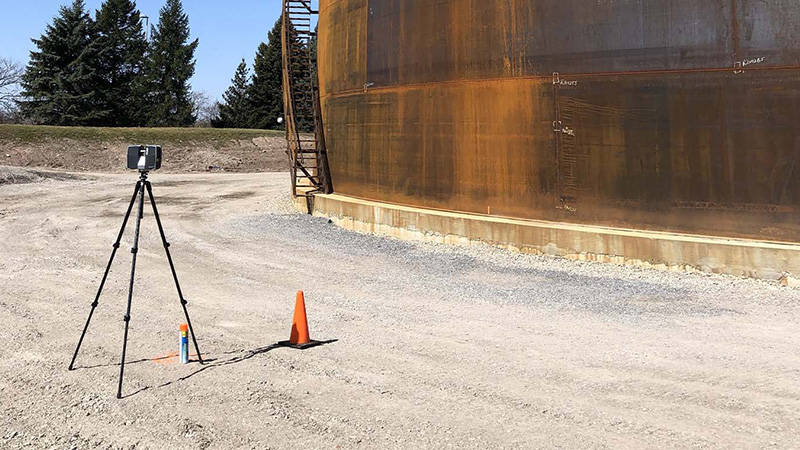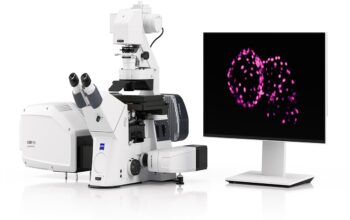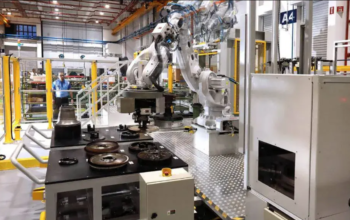Changing the mindset: from billable hours to long-term efficiency and profit
How many times is it really necessary for workers to return to a site to take “just one more” measurement? How many times do workers miss an obstruction in their measurement and it goes on to negatively impact the project? Why are some construction firms still more interested in billable hours than the long-term profits that efficiency provides?
In his three decades of work in the architecture, engineering and construction industry, John Monell has seen it all. He started out in surveying and drafting when it was pen and ink on mylar. He’s followed the latest advances wherever they’ve led — to AutoCAD®, geographic informationsystem (GIS) technology and most recently to drones and 3D reality capture solutions, such as laser scanners.
During this time, he’s done 3D reality capture for numerous projects and companies: oil refineries in Boston, water treatment plants in New York, chemical plants in Oklahoma, a rockslide in the mountains of Utah; dozens of historic preservation sites, private residences, a retired submarine and even highways across Nepal from a helicopter.
John Monell holds the values of efficiency, accuracy and independence highly in his work. It was actually the pursuit of these values that led him out of the corporate construction world and into small business ownership. He didn’t like the mindset in a lot of larger companies that prioritized billable hours over actual project completion.
“Honestly, this is one of the reasons why I left the corporate world,” Monell said. “Because if I use the laser scanner, it’s going to eliminate change orders, it’s going to eliminate field visits and it means that construction companies are going to be able to get the job done quicker and for less money. And they didn’t see that as a good thing! That was one of the bigger fights that we’ve had in the industry — and we still have it.”
He remembers the first project he ever did with a laser scanner in 2008: It was a pipebridge capture at a refinery, and it only took 17 minutes to complete. Monell immediately realized that 3D laser scanning was the “next level to data capture” — and he was even more convinced of the power of 3D reality capture when the measurements were perfect, and the parts didn’t require any re-cuts or rework.
“It was that first breakthrough where I thought: OK, I can trust the data. You know, at the time, everybody was skeptical. It was fairly new technology, and we were all like: What do you mean we can collect this in half-an-hour?”
But in a paradoxical way, Monell finds that the speed, precision and efficiency of 3D reality capture isn’t always seen as a good thing among contract bidders. He said there are plenty of firms that “like to live on change orders.” They’ll bid low, knowing that they can make up the price on the back end of the project.
For example, a friend of his in the industry put out contracts and made it clear that whoever won the contract had to use 3D reality capture data. “The bid number they generated from the scans would be the number — and there were to be no change orders,” Monell said. “But that didn’t go over too well with some of the contract bidders.”
So, even though there’s the ability to do things faster and smarter, why doesn’t the broader construction industry embrace 3D reality capture solutions? Why doesn’t everyone want to incorporate them into their workflow and enjoy the advantages in speed and precision?
“That’s exactly the question!” Monell said. “Why do it right the first time, when they can just bill more? It’s been hard for some firms to figure out the answer, but here it is: Instead of letting a job drag along for twelve months — getting bogged down with five- and ten-thousand-dollar change orders — you can get it done in eight months, and then move straight on to your next hundred-thousand-dollar job. Now that 3D reality capture is being used in everything from video games to Game of Thrones, more and more firms are buying into the technology.”
Wanting to alter the mentality of “living on change orders,” John Monell decided to embark on his own journey with FARO® 3D reality capture solutions at his side. In January 2020, he, along with his wife Alane and son Zach, founded Monell 3D Services.
The next level in data capture
On his journey into small business ownership and 3D reality capture, he’s found incredible support.
Right from the beginning when I got into laser scanning, the support was fantastic. I’m on my own — even when I was working for other companies, I was the only person doing laser scanning. So, everything I learned was through FARO sales reps, other people within FARO or online laser scanning boards. It’s always been extremely reassuring that FARO support has been there for me, that I had the backup to help me through the learning process.
When he was looking to venture out on his own with Monell 3D, the cost-efficiency of FARO technology was important — but equally so was the reliability of FARO’s customer support network.
“Return on investment and support — those are the things that FARO has always been wonderful at supplying. Even from the very, very beginning, when we got our first scanner, there’s been a core group of people that have really helped me out. And the ones who were there in the very beginning are still involved in the scanning community. So, it’s reassuring that those people are still here when I have a question.”
Another key point to the success of Monell 3D as a small business is the simplicity of the 3D reality capture. John Monell is the only field employee — so, the data collection tools he uses must be reliable. That’s why he chose FARO.
“My favorite thing about my job is that I can collect a lot of data on my own. You know, we’ve all been let down by co-workers. So, it’s the idea that I can do it; I’m in charge of my work product. Whether it’s a wastewater plant or a historic preservation site, I know that the data from FARO equipment will be accurate. And I can multipurpose it: I can generate videos with it, I can generate still shots. There’s a lot of things that I can do — and that’s the key, it’s all stuff that I can do on my own.”
The value of 3D reality capture solutions over the old methods
Most of the work Monell 3D does today is municipal — water plants, wastewater facilities, tank strapping and more. Local budgets are always tight. But if a small municipality hires Monell 3D to do a job, Monell estimates that he can get the job done 25% cheaper — in addition to providing 3D data that’s better and more versatile.
“The traditional firms, they’re only capturing 40 or 50 measurements in one visit. And even with all those trips they take, they’re not getting every bit of equipment out there; it’s just what they need for that day. Then tomorrow, they’ll come back to you and say, ‘Oh, shoot, we have to go back and get this measurement now.’”
Monell frequently has project managers from municipalities come to him after realizing what’s going on. They’ll tell him that they should have just scanned from day one. “I’ll tell them: Truth is, you probably could have scanned from day six and still saved money.”
In addition to these cost-savings, the 3D data capture that the FARO Focus Laser Scanner provides will save municipalities money in the future, too. 3D reality capture provides higher quality data that can be accessed in the cloud at any point in time.
“So many times, the client will change their mind about a job after I’ve already gone to the site and taken measurements,” Monell said. “At the start of a job, they’ll have decided they want to put in a pump in the northwest corner of the room. But then later, they’ll contact me and say that they actually want to install the pump in the southeast corner. When this happens, it’s easy for me, because I can say: OK, you’ve got the data! You don’t have to pay me to go back and see if there’s anything in the way. Just open up the cloud and it’s right there.”
That’s the beauty of FARO Focus Laser Scanners and the data they provide. In carving out a job for himself in this space, John Monell has used 3D reality capture solutions to find autonomy, freedom and success in his work.
“It’s a neat little niche that I’ve created for myself. Being just me in the field, we have a lot of control over our pricing — but we can still provide you that cutting edge technology.”
He sees the industry continuing to evolve in this direction.
“With the FARO data, you’re taking the same point cloud that you’re going to generate your design with and you can run volumes with it, you can create animations. All the kids that grew up playing video games, they’re becoming engineers now. So, they like seeing designs in 3D — and that’s where everything is going.”









